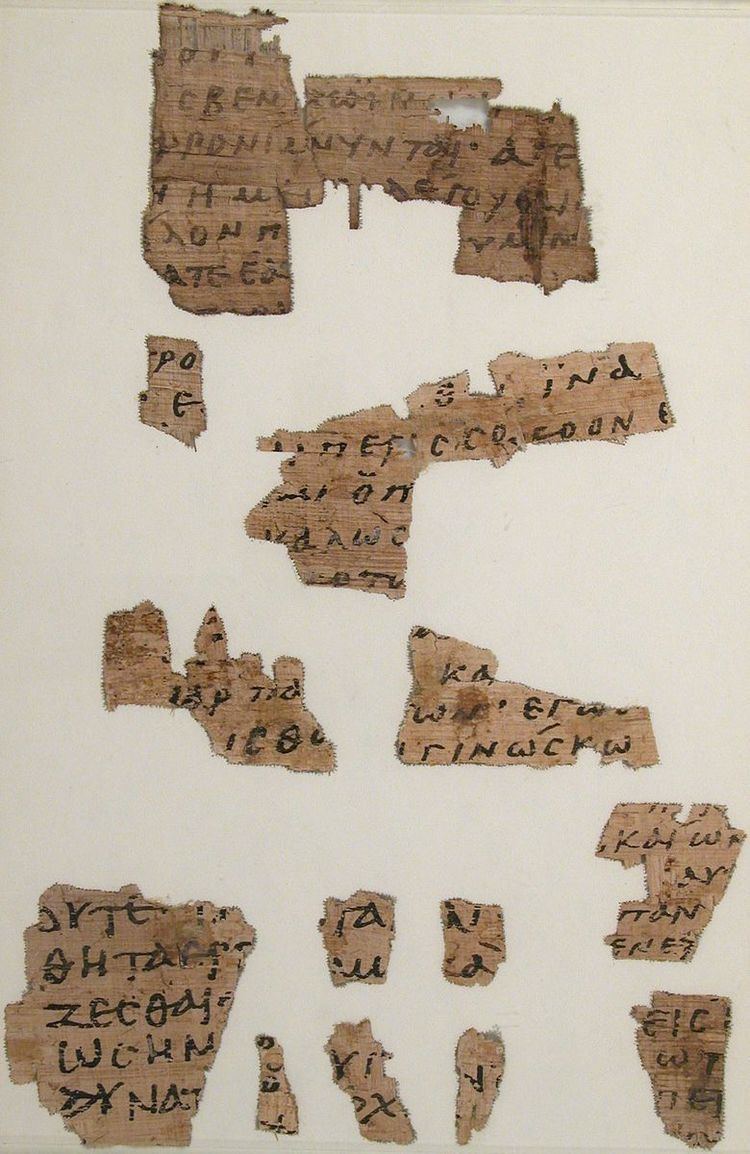Order in the Bible part 4 | ||
 | ||
John 10 is the tenth chapter of the Gospel of John in the New Testament of the Christian Bible. It records the sermon of Jesus Christ about Him being the "Good Shepherd" and contains the only mention of Hanukkah, the Feast of Dedication, in the New Testament. The book containing this chapter is anonymous, but early Christian tradition uniformly affirmed that John composed this Gospel.
Contents
Text
Places
Events recorded in this chapter refer to the following locations:
Structure
The New King James Version organises this chapter as follows:
The true shepherd illustration
In verses 1-5, Jesus uses a parable, illustration or "figure of speech" regarding the manner in which a true shepherd enters his sheepfold, unlike the manner of a thief or a stranger. Anglican Bishop Charles Ellicott notes that "the word rendered 'parable' is the wider word (Greek: παροιμία, paroimia) which includes every kind of figurative and proverbial teaching, every kind of speech, as the etymology reminds us, which departs from the usual course (Greek: οῑμος, oimos)". Jesus' audience ("they") did not understand.
In this illustration, the true shepherd "enters the sheepfold by the door" and "calls his own sheep by name and leads them out (Greek: ἐξάγει αὐτά)" (John 10:1,3). This is the only occurrence of the word ἐξάγει (exagei) in the New Testament. The Ethiopic version adds "and loves them".
The door of the sheep, and the good shepherd
Jesus describes himself in verses 7 and 9 as "the door" and in verses 11 and 14 as "the good shepherd". The word in Greek: θύρα is translated as "door" in the King James Version and the American Standard Version, but as "gate" in the New Revised Standard Version, the Common English Bible and other translations. In verse 7, the Textus Receptus adds that Jesus said to them (Greek: αὐτοῖς) but this addition is generally agreed to be "of doubtful authority".
The Feast of Dedication
Verse 22 refers to Hanukkah:
Now it was the Feast of Dedication in Jerusalem, and it was winter.The believers beyond the Jordan
The chapter ends with Jesus evading Jewish attempts to stone him (John 10:31, 39) and then leaving Jerusalem (John 10:40) and traveling "beyond the Jordan to the place where John was baptizing at first" (Perea). Matthew 19:1 and Mark 10:1 similarly record that Jesus traveled "to the region of Judea by the other side of the Jordan", but in the synoptic tradition He had previously been in Capernaum rather than Jerusalem. Perea was a region where many people "came to the decision that He was the Messiah" (John 10:42 in the Living Bible translation).
